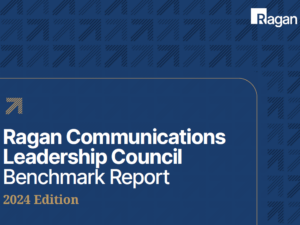How to ‘speak CEO’ with your measurement strategy
Flashy KPIs and vanity metrics might make your boss happy, but they won’t optimize your communications. Here are three more strategic—and surprising—ways to quantify your value.

PR professionals have been looking for a plug-and-play measurement panacea for decades. That’s a problem, according to Katie Paine, founder of KD Paine Partners.
“A ‘silver bullet’ mindset suggests a one-time fix,” says Paine, who presented at PR Daily’s Media Relations & Measurement Conference last week in New York City. “It’s not sustainable.”
The solution, she believes, is to think more strategically and “speak CEO.” Here’s how:
- Think puppies and kittens.
“Instead of a magic silver bullet, make measurement more like cute puppies and kittens,” Paine suggests. “They were genetically made that way to be adopted, nurtured and survive longer. So make measurement something that will survive, be budgeted for and included.”
How to do that? Her advice is to “rebrand” measurement at your organization.
“The word ‘measurement’ can seem unapproachable. Better might be phrases like ‘assumption testing,’ ‘market research’ or ‘opportunity identification,’” she explains.
“They could be more in line with what your C-suite wants to hear,” she says. “They make you part of the strategy and planning, instead of being relegated to justifying expense afterwards.”
Jesse Lewin, senior director of communications at McDonald’s, agrees.
“Measurement doesn’t start when a campaign ends,” he says. “Metrics must instead help your execs inform their strategy from the beginning.”
- Break up with vanity metrics.
“We won’t get a seat at the table if we keep talking about ‘building buzz’ or vanity metrics like impressions and share of voice,” says Nicole Moreo, who heads customer insights at LinkedIn and also spoke at the conference.
“We have to go beyond metrics like media impressions and story counts and instead focus on more descriptive metrics,” agrees Lewin, citing metrics like:
- Target media penetration
- Sentiment
- Message penetration
- Website traffic
- Story velocity
- Engagements
- Search performance
- Lead generation
- Offer redemption
- Practice data storytelling for execs.
Pulling descriptive, qualitative metrics doesn’t automatically endear you to the C-suite.
“You also must link communications activity to business goals,” says Moreo, who in addition to her role at LinkedIn serves as the North American Chapter Chair for AMEC (International Association for the Measurement and Evaluation of Communication).
She calls it “data storytelling” and shares the following process for doing it effectively:
- Step 1: Center your story around the behaviors, actions or perceptions you were trying to change.
- Step 2: Provide context:
- How are you highlighting your target audience(s) and how they intersect with your industry/brand?
- Dive into your category. What key topics/issues exist, where do your competitors play, what is the white space and what intersects with your value proposition?
- Understand the cultural elements that are driving engagement and how they impact your audience, category and brand.
- Step 3: Connect to a business goal using the C-Suite’s language. “For example, ‘share of voice’ shows effort made—but doesn’t show the impact,” Moreo says. “Execs want to see impacts like reputation improvement, relationships improved or established, or even increase in sales and donations.”
Moreo also suggests checking out this downloadable AMEC Measurement Planning Worksheet or visiting AMEC for additional resources.
Brian Pittman is a Ragan Communications event producer. For more information about Ragan Training, contact him at brianp@ragan.com.







